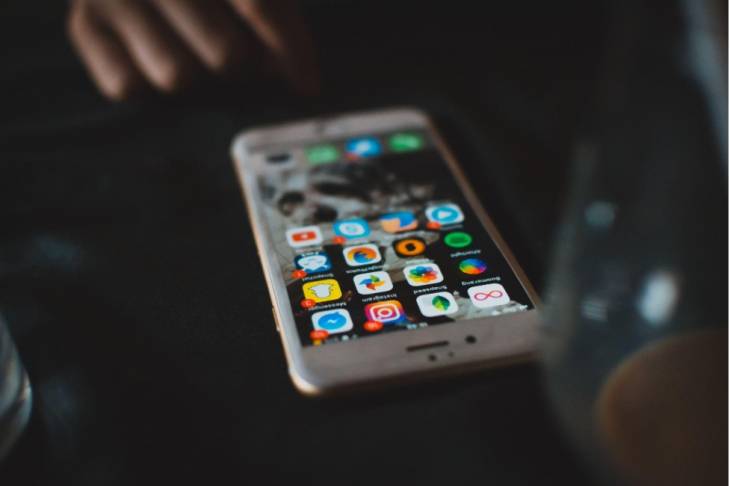Understanding the Seven Stages of Mobile App Development

A mobile app's purpose is to simplify users' lives, not frustrate or complicate them. So, while building a mobile app, you must ensure that it works seamlessly and meets users' expectations. That's why clearly defining all the mobile app development stages is essential.
Defining all the mobile app development stages ensures that all the stakeholders know what's expected of them and what actions they need to take to build a successful mobile app.
Stages of Mobile App Development
Here the seven stages of app development that’ll help you can better understand what it takes to build a successful mobile app.
Stage 1: Planning & Research
In this initial planning and research stage, you identify the target audience and define the goals and objectives of a mobile app. The end goal of this stage is to check the feasibility of your idea in the current market landscape. You can do that by answering the following questions:
- Why are you building the mobile app?
- How does the app solve your target audience's problem?
- What makes your app idea unique?
Answering these questions will help you understand the market before you invest time and resources in building the mobile app. Besides this, you also decide on the platform you want to make your mobile app available.
To ensure the planning and market research stage of mobile app development is successful, keep the following things in mind:
- Spend enough time studying the market and identifying the competition gaps. It would ensure that the app you're building is successful.
- Gauge the competition and ensure you're building your app better than them. Only then can you survive the market.
- Choose the mobile app development platform where the majority of users exist. There's no point in building an iOS app when most of your target audience uses Android smartphones.
Stage 2: Prototyping
The mobile app development prototyping stage focuses on creating a visual representation of the app's user interface and user experience. It may involve creating wireframes, which are simple black-and-white outlines of the app's screens and features or creating mockups, which are more detailed and interactive representations of the app's design.
The goal of the prototyping stage is to get a sense of how the app will look and feel. It also aims to identify any issues or improvements before the app you start developing the mobile app.
Prototyping can help stakeholders understand your mobile app’s functionality and understand how it will work. It can also help developers identify any technical challenges or constraints you need to address.
You can perform prototyping using various tools, including paper and pencil, specialized prototyping software, or a combination of both. The level of detail and interactivity of the prototype will depend on the needs and goals of the project.
Stage 3: Design
The mobile app development stage focuses on creating the app's visual and user experience design. It may involve creating wireframes, which are simple black-and-white outlines of the app's screens and features or creating mockups, which are more detailed and interactive representations of the app's design.
During the design stage, you create and refine the app's user interface (UI) and user experience (UX). This stage includes:
- Determining the layout navigation and overall look and feel of the app
- Considering the needs and preferences of the target audience
The design stage may also involve creating branding and marketing materials for the app, such as logos, icons, and promotional images.
The goal of the design stage is to create a cohesive and intuitive design for the mobile apps that can appeal to the target audience and meet the goals and objectives of the project.
The design stage typically involves a lot of iteration and testing to ensure that the app's design is practical and meets the users' needs.
Stage 4: Development
During the development stage of mobile app development, the actual coding of the app takes place. It involves writing the app's features and functionality code using a programming language like Java or Swift.
The development stage may also involve integrating any necessary APIs (Application Programming Interfaces) or libraries, which are collections of code that you can use to perform specific tasks or provide access to external data or functionality.
Development is the longest and the most complex app development stage, involving a lot of trial and error as the developers work to bring the app's design and functionality to life.
The development stage may also involve working with a team of developers, each responsible for different aspects of the app, and coordinating with other stakeholders, such as designers and project managers.
The development stage aims to create a functional and stable app ready for testing and deployment.
Stage 5: Testing
The testing stage of mobile app development is focused on ensuring that the app is stable, performs as expected, and is free of bugs and errors. It involves the following testing types:
- Unit testing: Testing individual units or components of the app's code to ensure they function correctly.
- Integration testing: Testing how the app's different elements interact.
- Acceptance testing: Testing the app from the user's perspective to ensure that it meets the requirements and goals of the project.
During the testing stage, you use the mobile app on various devices and platforms to ensure that it works properly and is compatible with different hardware and software configurations.
The testing stage aims to identify and fix any issues or bugs in the app before you release it to the public. Testing is essential as it ensures that the app is high-quality and performs well for the users.
Stage 6: Deployment
The deployment stage of mobile app development involves making the app available for download and use by the public. It typically involves publishing the app to various app stores or other such platforms, like the Apple App Store and Google Play Store.
Before deploying the app, you must properly package and prepare it for distribution. It may involve creating installers or other package files and signing the app with a digital certificate to ensure its authenticity.
After deploying the app, you must monitor its performance and usage and make any necessary updates or fixes. It may involve releasing updates or patches to fix bugs, adding new features, or rolling the app back to a previous version if necessary.
The goal of the deployment stage is to make the app available to users and ensure it meets users' needs.
Stage 7: Maintenance
The maintenance stage of mobile app development involves ongoing updates and improvements to ensure that it functions correctly and meets the users' needs. It may include fixing bugs, adding new features, and improving the app's performance.
During the maintenance stage, you must monitor the app for usage and performance. At this stage, you should address all the updates or fixes in response to user feedback or issues arising.
The maintenance stage may also ensure that the app remains compliant with relevant laws or regulations and is compatible with new versions of the operating system or other software.
The maintenance stage aims to keep the app running smoothly and to ensure that it continues to meet the users' needs.
In Conclusion
These are the seven stages of the mobile app development process. While they may slightly differ depending on an organization, project size, and the development approach – the fundamental essence remains the same.
Apply this knowledge and put it to practice to build high-quality apps each time.















![Over 50% of American Adults Have Not Read a Book in Past Year [Study]](/sites/default/files/styles/video_thumbnail_bottom/public/older-man-reading-book-in-library.jpg?itok=m7DlbWgZ)






